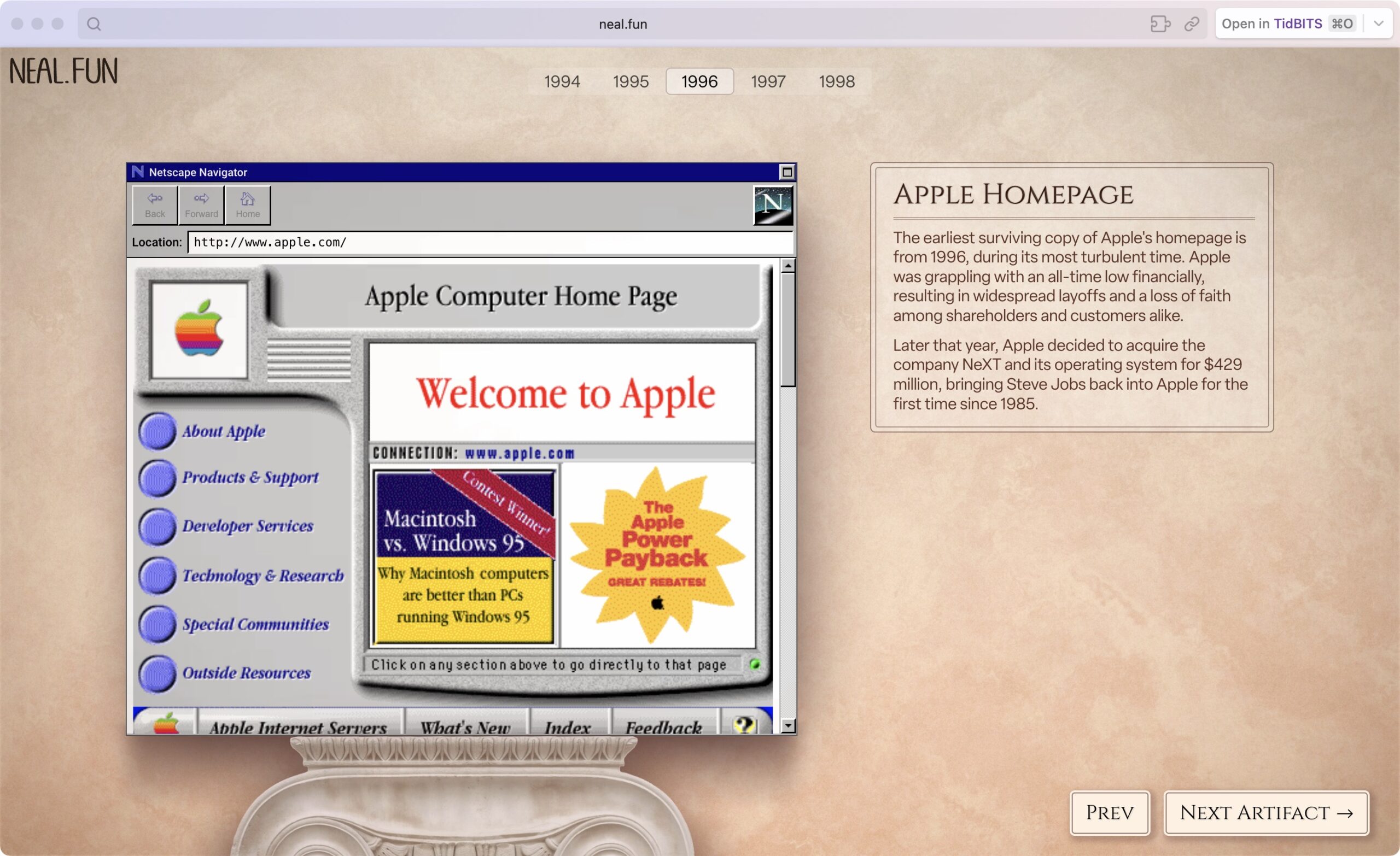Internet Artifacts Virtual Museum Exhibit Documents 30 Years of the Internet
Neal Agarwal is back with a new entry for his collection of entertaining (and sometimes educational) tiny websites. Internet Artifacts is a virtual exhibit of artifacts—some screenshots, though many of the websites are interactive—from early Internet history. Speaking as someone who’s been using the Internet since the mid-1980s, many of these artifacts were familiar, but others either predate me or came around once the Internet had grown too large for anyone to track. Among much else, you’ll find the first home pages for Apple, Google, and Wikipedia. The exhibit starts in 1977 with a map of ARPANET and ends in 2007 with a video of Steve Jobs announcing the iPhone. What’s your favorite artifact?

Neal’s compendium is a delightful trip down memory lane. But it’s missing what was for me a foundational element of the internet: the highly acclaimed Internet Starter Kit book from 1995. Still have mine
And (thanks to the internet), it’s still available here:
Wow…that was fun.
I no longer have my copy. Either I lost it or, more likely, loaned it to a friend. Wish I still had it.
My husband and I both swear that if it wasn’t for Adam’s Internet Starter Kit we never would have gotten hooked in to the Internet. He also had a wireless networking book that was equally as informative and helpful. We also could not part with either of them, and they hold a place of honor on our bookshelf.
Possibly “The Wireless Networking Starter Kit,” which @Glenn and I wrote?
This most certainly was it!
My introduction to the internet was in 1983 with a Sinclair Spectrum computer and, of course, a dial-up modem. I dabbled in early online banking and some other services like teletext news.
Wish I had kept some screen shots of the experience but I guess that one image would have filled the memory of the 48K Spectrum!
I still have the Spectrum but haven’t figured out a way to use a display. The computer only worked with an old-style TV and plugged into the aerial socket.
I was disappointed in the scope/depth of Internet Archive’s content, organization, and navigation. In short, it’s not very useful.
I was hoping for something more like this site about Unicode:
https://www.worldswritingsystems.org/
Ironically, Internet Artifacts reminded me of a term used to describe websites in the 90s, Brochureware, or more derogatorily, Shovelware.
It’s perhaps best thought of as a museum exhibit, not a full-fledged museum.
Very few items could top Steve Jobs introducing the iPhone at MacWorld. It was a stunning look at what would come our way the following June and is a tear-inducing Keynote by one of the greatest presenters of all time. If you haven’t seen it in a while, watch it.
I love that the Grateful Dead is the only band with its own newsgroup. I heard on The Good Ol’ Grateful Deadcast that they had to do that because otherwise rec.music was so swamped with deadhead posts that everything else was lost in the deluge.
Steve Jobs debuting WiFi with a hula hoop comes very close:
From BusinessInsider.com :
Robert Metcalfe (the inventor of Ethernet) wrote an article for Infoworld in December 1995 in which he predicted, “I predict the Internet will soon go spectacularly supernova and in 1996 catastrophically collapse.”
To be fair, the Internet, as it was in the early 90’s was on its way to implosion.
What Metcalfe failed (or chose not) to see is that the standards bodies (especially the IETF) were well aware of the problems and had been working on solutions for quite some time. And these solutions were deployed long before the predicted implosion happened. Some of these technologies include:
Plus massive improvements in CPU power, the invention of NPUs and other specialized packet-forwarding processors, and memory capacities allowed the development of routers on the scale needed to support the modern Internet.